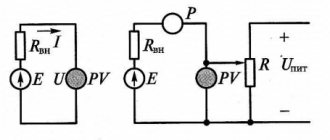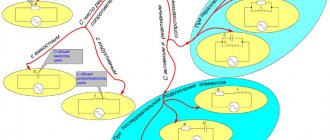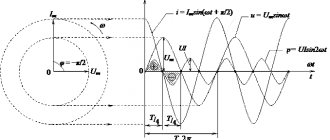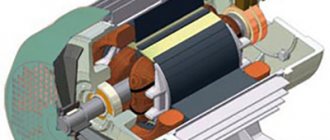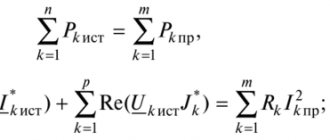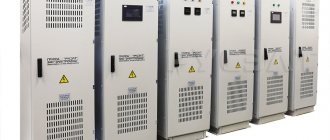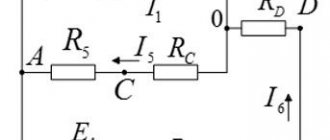Good day to all. In the last article, I talked about concepts such as electric current, voltage, resistance and the fundamental law of direct current - Ohm's law. But this, undoubtedly, is not enough for a complete understanding of the processes and emerging patterns in the functioning of electronic circuits. In further articles I will gradually form a holistic picture of such an interesting field of technology as electronics.
To assemble a radio-electronic device, you can pre-make a DIY KIT kit using the link.
What is a current source
If in a certain object there is an excess of electrons on one terminal and a deficiency on the other, then after its inclusion in the circuit, an electric field will appear in it, which will ensure the presence of the current and voltage necessary for the correct operation of the circuit.
In this case, electrons will move from the terminal where there is an excess of them to the one where there is not enough of them. If no additional measures are taken, then after moving the carriers to a new location, the charges will equalize, and the voltage and current will become zero. As a result, the electric field will disappear.
As is known, direct current sources operate in such a way that the charges at the terminals are maintained constant. A prerequisite for this is the movement of electrons back to the terminal where their excess should be. This transfer occurs as a result of the work performed. It is carried out on a continuous basis.
In practice, over time, the DC source gradually discharges, and the number of charges at its terminals decreases. An example is the gradual discharge of the battery of an electronic gadget.
The forces that perform the work of restoring terminal charges can be of a different nature. Most often they are the result of certain chemical processes.
Various types of current sources
The most common type is DC power supplies, which are of a chemical nature. These are batteries and accumulators. As a result of the chemical reactions occurring inside them, electrons from the outer shells of the atoms are torn off and moved to the negative terminal.
Therefore, it can be argued that current flows inside the accumulator or battery, and its movement is determined by the ongoing chemical processes. Typically, such current sources allow the use of relatively low voltages.
Energy sources can also be electromechanical. With their help, a fairly high voltage is obtained. Electromechanical devices produce electricity by performing mechanical work. This method has found wide application in industry.
The principle of operation of a thermal source of direct electric current is based on the phenomenon of heating. Under the influence of high temperature, an electromotive force arises at the point of contact of two metals or semiconductor structures. The higher the thermal energy consumption, the greater it will be. Electric current flows from the heated area to the cold one.
Thermoelectric sources are practically not used to power electrical equipment, since a small potential difference occurs in them. The main consumers of such electrical energy are temperature sensors.
The use of light sources in technology is becoming increasingly widespread. In such devices, electrons, under the influence of photons of light, receive additional energy and leave their atoms, forming an electric current. This environmentally friendly option for generating electricity is possible, for example, in desert areas where the weather is almost always sunny. It is advantageous to install a photovoltaic power source on the roofs of houses to provide citizens and organizations with electrical energy.
Distinctive features
From what has been said we understand the following:
- Physics understands a current source as a unit that generates a constant parameter at the output. Practice often makes different demands. Although more often a constant current is required.
- In the diagrams, the current source is designated differently than the EMF source. Circle with two jackdaws. Sometimes there is a Latin letter I next to it. This helps to solve, according to Kirchhoff’s equations, the problem of finding the conditions of the elements of an electrical circuit.
- The form of the law of the generated current is determined by the needs of the consumer. Most household appliances are powered by voltage. Constant current and a special form are not needed, they even cause harm. A meat grinder requires more energy when the shaft is jammed by a bone. The control and protective electronics are configured for this.
- The power supplied by an ideal source increases in proportion to the active resistance of the load. In reality, we see a certain limit, above which the parameters will begin to differ from the specified ones.
Simply put, historically, from a practical point of view, it is more convenient to maintain constant voltage rather than current. The term discussed in this section causes many difficulties for people who are outsiders, far from electronics, and quite versed in technology. So, the current source is responsible for maintaining the desired current shape. More often a permanent one is required.
The magnitude of the current will serve regulatory purposes. The sparking of the commutator motor is accompanied by an increase in load. The current consumption increases, the control circuits increase the voltage on the windings in order to overcome the “crisis” that has arisen. Leads to the need to control the current value. In meat grinders, the problem is solved by a feedback circuit that forms the cutoff angle of the input voltage with the switch.
Trying to keep the potential difference constant, devices vary current consumption. As a result, the power requested from the substation changes, the effect leading to a voltage drop. We visually observe the slow blinking of incandescent light bulbs (energy-saving ones have a driver in the base to maintain a constant voltage). Similarly, devices would show a current dip at a constant voltage.
How do chemical sources work?
Such sources can be divided into two types:
- Galvanic, the operating principle of which is based on the use of electrolytic reactions.
- Rechargeable, capable of being recharged using electrical energy.
Galvanic ones are also called primary sources, and battery ones are called secondary sources. The principle of operation of the former is based on the presence of an electrical composition in which the terminals are immersed. The chemical processes occurring here ensure the movement of electrons in such a way that there is always a shortage of electrons at one terminal, and an excess of them at the second.
Galvanic devices do not require the use of an additional energy source for charging. The disadvantage of galvanic current sources is that during their operation, irreversible chemical reactions occur, which gradually reduce the efficiency of the battery, and ultimately lead to the cessation of its functioning.
The terminal with a positive charge is usually called the cathode, and the terminal with a negative charge is called the anode. The first is usually made of cadmium, lead, zinc. For the second, graphite, manganese oxide, nickel hydroxide or lead oxide are used.
There are different types of voltaic batteries. Their name is determined by the electrolyte used. Mainly used:
- Lithium.
- Alkaline.
- Salt ones, which are also called dry ones.
Batteries of the second and third types consist of a graffito-manganese rod, which is the cathode. It is located inside a zinc cup that acts as an anode. The gap between them is filled with electrolyte.
It is important to note that the latter is not a liquid, but a paste. Alkaline batteries use potassium hydroxide, while salt batteries use a paste made from ammonium chloride.
The cathode of a lithium battery is made of lithium derivatives on aluminum foil, and the anode is made of graphite on copper foil. Between them there is a porous separator impregnated with electrolyte and performing the functions of a conductor.
The operating cycle of a battery, unlike a battery, is that during the charging process under the influence of electrical energy, chemical reactions occur that ensure the accumulation of charges at the terminals. That is, first electrical energy is converted into chemical energy, and then the latter is converted back into electrical energy.
However, such transformations are not permanent; they gradually reduce the efficiency of the power supply. Over time, the potential obtained at the terminals during recharging becomes smaller, and the discharge time becomes shorter. The presence of the memory effect significantly reduces the efficiency of using the energy source.
The memory effect manifests itself as follows: if charging occurs to the maximum value and discharging to zero, then its influence is minimal. If the battery is started to be used without being fully charged, it remembers the last value and subsequently considers it the maximum. With subsequent recharges, the battery will no longer exceed it.
The most common types of batteries are:
- Lithium-ion.
- Alkaline nickel-cadmium.
- Lead-acid.
Each variety listed here has a corresponding designation on its body, as well as its own strengths and weaknesses.
Lead-acid or nickel-cadmium batteries are usually mounted as a unit. In this case, the cathode of the previous element is connected to the anode of the next one. As a result, the consumer receives a total potential difference.
Lithium-ion batteries are more popular due to their ability to be recharged multiple times with virtually no memory effect.
Additional power supply types
In addition to the main power source, there will also be a backup electrical power supply and an electrical power supply for security systems. Let us give their definitions and examples.
A standby electrical power supply is an electrical power supply designed to maintain power to an electrical installation or parts thereof, or a part thereof, in the event of interruption of normal power supply, but for purposes other than safety.
An electrical security power supply is an electrical power source designed for use as part of a security electrical power system.
Where the presence of safety systems relevant to fire protection and other conditions for emergency evacuation of buildings is required, for example, by controls and/or if the provision of backup power is required by the administrative person establishing the technical requirements for the electrical installation, the characteristics of power supplies for safety systems and ( or) backup systems must be determined for each individually. Such power supplies must have adequate power, reliability, ratings, and switching times for the specified type of operation.
Note 1 - The need for installation of safety systems and their characteristics are usually regulated by the competent authorities, the requirements of which must be complied with.
Note 2 - Examples of safety systems are: fire detection, warning and fire evacuation control systems, emergency lighting on evacuation routes, emergency ventilation and smoke protection, internal fire water supply, installations for fire pumps, elevators for fire brigades, drainage equipment smoke and heat, critical medical equipment.
Power sources for security systems can be:
- rechargeable batteries;
- galvanic batteries;
- generator sets independent of the power supply used in normal mode;
- a separate transmission line of the electrical distribution network, virtually independent from the transmission line used in normal operation
The power source for the security system can be:
- non-automatic power source, which is started by the operator;
- automatic power source, which is started independently of the operator.
Depending on the switching time, automatic power supplies are classified as follows:
- No power interruption: The automatic power supply can provide continuous power under specified conditions during the transition period, such as voltage and frequency changes;
- with very short power interruption: automatic power supply can supply power within 0.15s;
- with short power interruption: automatic power supply can supply power within 0.5s;
- with medium power interruption: automatic power supply can supply power for 15s;
- with long power interruption: the automatic power supply can provide power for a period of time exceeding 15 s.
Mechanical sources
When using them, current is generated using generators. Mechanical energy ensures its rotation, and the changing energy of the magnetic current ensures the formation of alternating current. To obtain constant voltage, you need to use rectifiers. Such devices are built on various circuits. Rectifiers can be half-wave or full-wave.
In the first case, the incoming current, which has a sinusoidal shape, is converted in such a way that only positive pulses remain and negative pulses disappear. In the second, the positive ones remain in place, and the negative ones change polarity. In the latter case, energy conversion occurs more efficiently.
A rectifier circuit including an input transformer provides lower ripple. Such variants of devices are called linear.
Pulse circuits are also used for rectification. First, a signal with a pulse frequency of 15–60 kHz is obtained from alternating voltage, which is then converted to direct current.
The latter option allows you to create a more compact circuit. The use of such devices is becoming increasingly widespread in modern electrical engineering.

